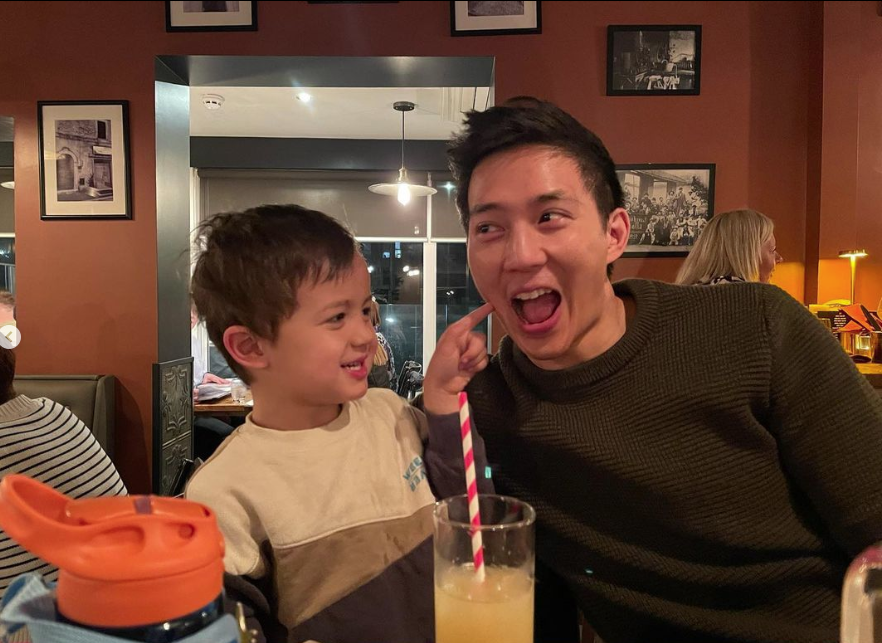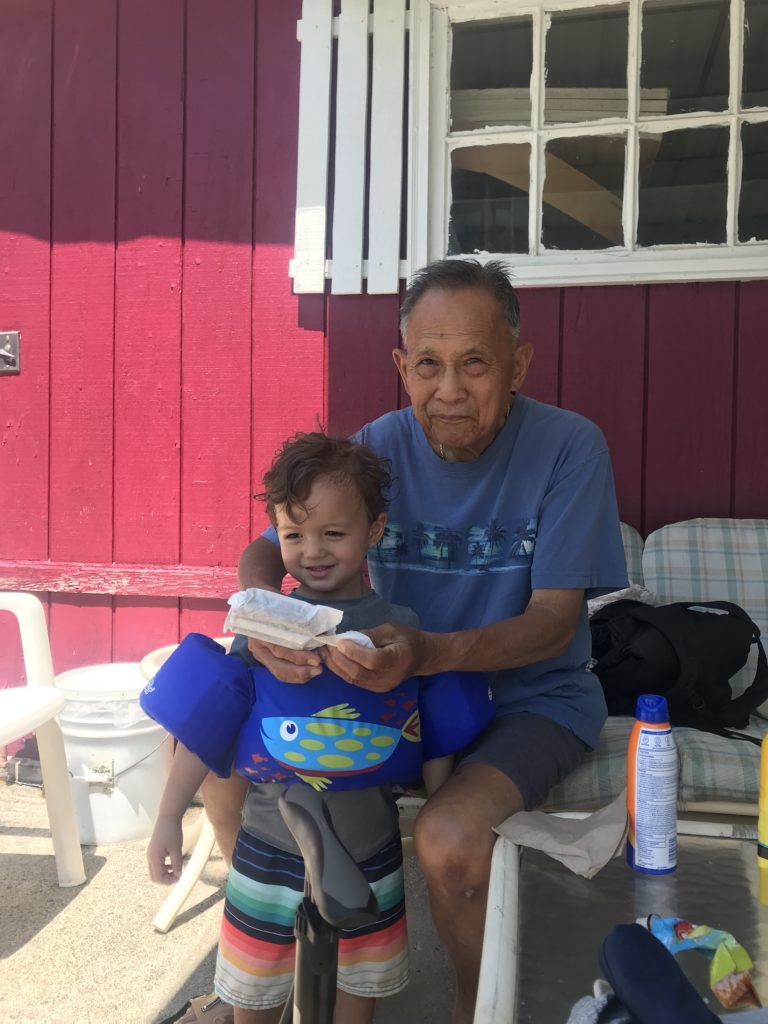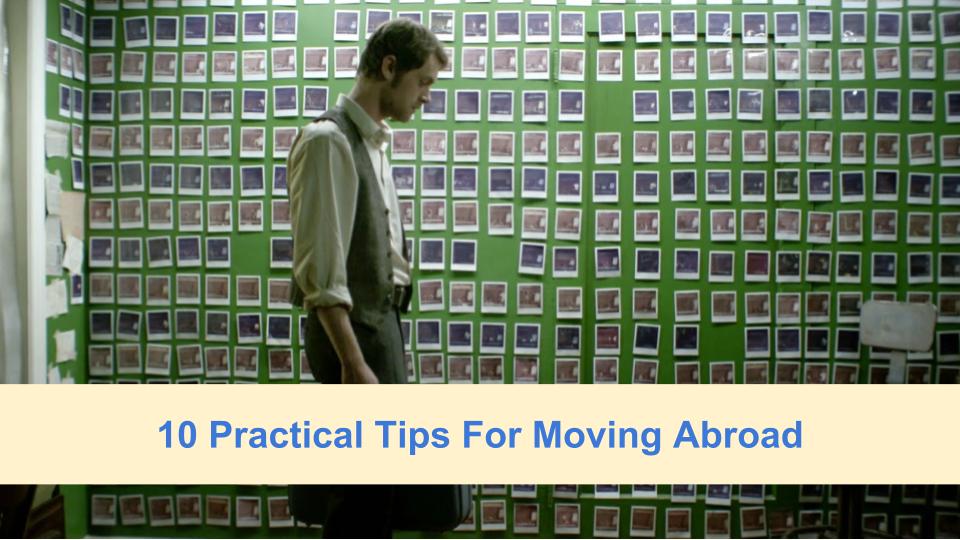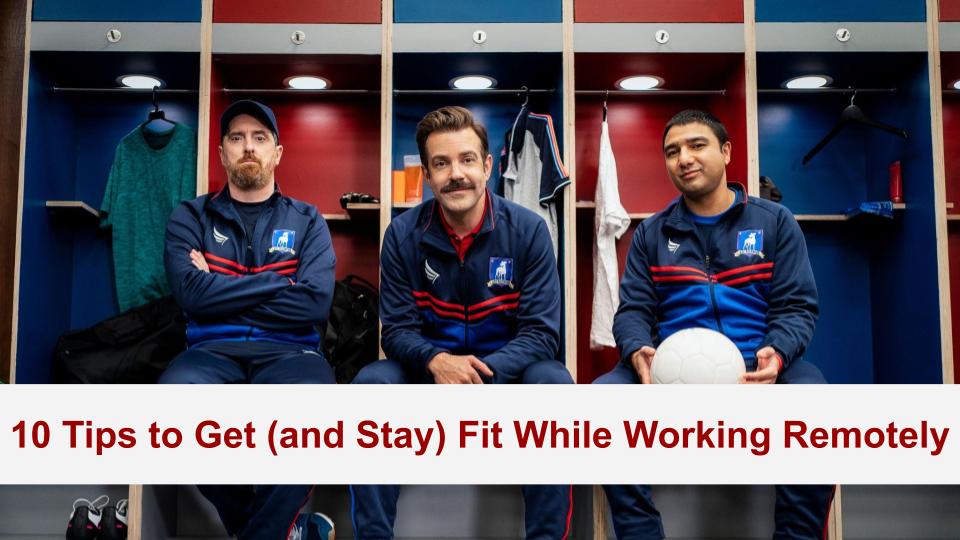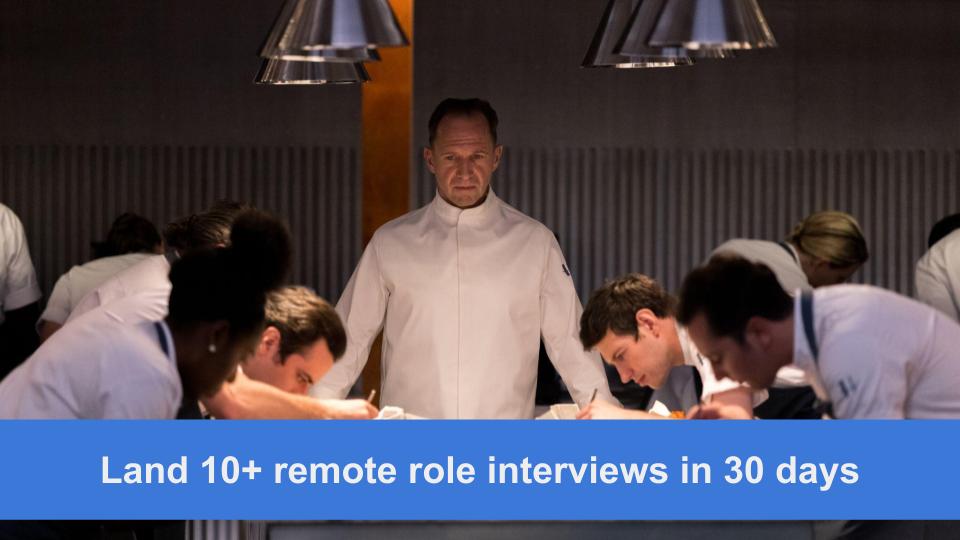In today’s post, you’ll learn how to plan an international move over the course of a year.
As I write this, my family is less than 90 days out from our next international move.

It’s easy for a move like this to land on someone’s bucket list…
And stay there.
They have:
- The desire
- The money
- The buy-in from work
But execution happens over a long timeline, with seemingly nebulous tasks.
While there’s no “right way” to make this move, I find having a timeline of “concepts” helpful.
Concepts are approaches to solve problems. “To dos” and checklists change depending on your circumstances; concepts are universal.
I’ve compiled these concepts from my notes over the past:
- 12 years
- 5 domestic moves
- 3 international moves
By following this guide, I hope it gets you started to make a similar move.
12 Months Out: “Big picture thinking”
Concept 1/ Ask: “What am I optimizing for?
When we moved to Europe, we decided to optimize for adventure.
Optimizing for adventure comes with tradeoffs:
- We traded a reasonable mortgage payment for high rent
- 15% haircut in the currency conversion
- Double-taxation
We decided these tradeoffs were worth it.
In the next move, we’re optimizing for learning.
See, we think someday we’ll settle in the states. We have no idea where, but we have some criteria:
- Close to major international airport
- On the East Coast
- In a major city
That doesn’t leave a lot of choices!
We decided now is the time to test different US cities against that hypothesis.
Takeaway: Ask: what are you optimizing for?
Concept 2/ Plan in 2-year timelines
I’m a schemer. A planner. I love thinking about life in 10-year blocks.
This is a big mistake.
Trying to solve 10-year problems when considering this move is like injecting yourself with a paralyzing agent. You’ll freeze.
When Amy and I started planning our move, we had all these questions we couldn’t answer, like:
- Where should we send the kids to school? (let’s get them through daycare first);
- Would we be able to buy a home? (who knew if we wanted to?)
- What if we got pregnant? (worry about it if it happens!)
Your circumstances will change quickly. Leave tomorrow’s problems for tomorrow.
I’ve found 2 years to be the sweet spot between present in the now, and building for the future.
Takeaway: Where do you see yourself in 2 years?
Concept 3/ One foot in the known, one foot in the unknown
There’s a big difference between a 2 week holiday and 2 years living abroad while working (and possibly, raising children).
The move itself will lead to countless unknowns: country, friends, foods, brands, routine, working hours, etc.
Balance it out with knowns. Here’s what that looked like for our recent moves:
- Language
- Internet access
- Proximity to friends and family
- Reasonable time zone relative to your working hours
Takeaway: What knowns do you want to keep? What unknowns do you want to face?
9 Months Out: “Make unknowns known”
Concept 4/ Prioritize so hard it hurts
Now is the time to start getting answers to the big unknowns.
That requires deep research.
Write down all your burning questions about the move. Take a week to do this. Don’t rush.
Then prioritize them in order of most to least importance. Examples:
- How will my employer pay me?
- What about health insurance?
- What visas will I need?
- Schools for kids?
- Daycare?
Here’s the dirty secret: you won’t get to your whole list. You won’t have every question answered. Some questions you’ll have to take a flyer on.
That’s why you prioritize, to make sure you answer the right questions first.
Takeaway: Write down, then prioritize, your burning questions.
Concept 5/ Boots on the ground
You’ve got your list of prioritized questions.
Deep research on the Internet will cover some of it.
But to get in the weeds, you need boots on the ground. People living in your destination who can help you with reconnaissance work.
Fortunately, thanks to social media, there’s someone sitting in your network who can answer them.
You’ll find them on:
- LinkedIn
- Facebook
- Instagram
- Alumni groups
- LinkedIn groups
- Company alumni
- Facebook groups
Most people overthink this. People are happy to help people who take action. Be one of those people.
Takeaway: Find people who can help you with your move and start asking your burning questions.
Concept 6/ Run the math, see the future
Before a big move, understand your burn: how much spend, how much you earn, and how long you can sustain that.
Get it 80% directionally correct. You don’t need to know where every cent is going.
At a bare minimum, calculate:
- Expenses. Get all your expenses and categorize them in big buckets (rent, groceries, child care, clothes, etc.) so you know where your money is going each month.
- Income. Calculate how much money is coming in per month.
- Cashflow. Take your income and subtract your expenses. If you’re positive, and you can keep everything the same post move, it means you can sustain it indefinitely. If it’s negative, that’s your monthly burn until you hit zero.
You can make the math more complicated to increase your confidence, but do these 3 calculations at a bare minimum to help you “peek” into the future.
Takeaway: Calculate your burn rate by subtracting your expenses from your income.
6 Months Out: “Decide and commit”
Concept 7/ Lock in your decisions
It’s time to start locking in your choices.
Start with the big three:
Employment. Make sure your employer is on board. Verify they’re OK with your move. Get it in writing if you need.
Location. Narrow this down as tight as you can.
If you know the continent, pick a country.
If you know the country, pick a city.
Got a city? Pick a neighborhood.
You won’t lock in the apartment/house for a few more months. But get as close as you can.
Schools. If you have a family, get ahead on the plan for schooling. There are zoning restrictions and wait lists to consider.
Takeaway: Confirm and verify the big three: where you’ll work, where you’ll live, and where your kids will go to school.
Concept 8/ Burn the boats
Start wrapping up loose ends in your current home.
You don’t need everything buttoned up, but have a game plan.
- Who to notify to break your lease? And when do you need to do this by?
- Who among your friends and family can you start to tell?
- Any final experiences you want to do before moving?
- What can you start selling right now?
- Accounts you need to close?
Takeaway: Get closure on this chapter of your life before you start the next one.
Concept 9/ Accept the nebulous fear
Some unknowns you won’t be able to clarify.
All the ducks won’t be in a row
Not everything will be ideal.
You have to commit anyway.
Every move, every city has its dysfunctions. This is a game of figuring out which dysfunctions you can live with.
Acknowledge the nebulous fear. But don’t let it stop you from creating the life you want to live.
Takeaway: Acknowledge the unanswered questions you have. Then commit to your decisions anyway.
3 Months Out: “Finish strong”
Concept 10/ What you own owns you
Move lightly.
The less you try and schlep with you, the freer you are in this world.
Your things aren’t just physical baggage, but emotional as well.
Worrying about “stuff” takes bandwidth. It causes stress.
I’ve found two things to be true:
- Few things I actually miss when they’re gone
- Most things are easier and cheaper to replace than I think (Facebook groups and marketplace are great for this)
Takeaway: Sell as much as possible to simplify the move. Most things you can replace inexpensively.
Concept 11/ Go fast to go fast
Sometimes you go slow to go fast.
Examples: big picture thinking, strategic planning, investing, etc.
When you’re 3 months out from your move, go fast to go fast.
90 days is less time than you think.
No matter how well you planned this out, the last week is a mad dash.
There’s one way to make this more tolerable:
Start sprinting earlier.
Takeaway: When in doubt, take action.
Concept 12/ Only the paranoid survive.
One of my favorite little hacks:
I have a countdown timer on my phone. It tells me how many days until the move.
When I’m 90 days from the move, I look at this. Every. Single. Day.
If I catch myself:
- Wasting time
- Feeling anxious
- Unsure of what to do
I look at this screen and take one small action.
- List something to sell
- Send an email
- Clear a drawer
Is it a bit manic? Sure.
But I want that mania spread out over the next 3 months, not the final 3 days.
Takeaway: Physically and viscerally remind yourself everyday that you’re one day closer to your move. Then act accordingly.
Conclusion
This timeline isn’t an exhaustive checklist of todos. There are dozens of nuances for your unique circumstances.
But I promise you that thinking about these concepts will prepare you for your move than even the most robust checklist.
Give this process a try. Ask the right questions. Build your own personal checklist as you go along.
If you execute against it, you’ll end up exactly where you’re meant to be.



